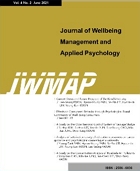- Log In/Sign Up
- E-ISSN2586-6036
- KCI
 E-ISSN : 2586-6036
E-ISSN : 2586-6036
KIM, Ik-Soo
SHIN, Deok-Young
LEE, Hee-Sun
KWON, Seung-Mi
SHIN, Jin-Ho
SHIN, YongSeung
Abstract
Purpose: This study was conducted to identify indoor air quality in various living spaces using sensors that can measure noise, vibration, fine dust, and odor in real time and to propose optimal indoor air quality maintenance management using Internet of Things(IoT). Research design, data and methodology: Using real-time sensors to monitor physical factors and environmental air pollutants that affect the comfort of the residential environment, Noise, Vibration, Atmospheric Pressure, Blue Light, Formaldehyde, Hydrogen Sulfide, Illumination, Temperature, Ozone, PM10, Aldehyde, Amine, LVOCs and TVOCs were measured. It were measured every 1 seconds from 4 offices and 4 stores on a small scale from November 2018 to January 2019. Results: The difference between illuminance and blue light for each measuring point was found to depend on lighting time, and the ratio of blue light in total illumination was 0.358 ~ 0.393. Formaldehyde and hydrogen sulphide were found to be higher than those that temporarily attract people in an indoor office space that is constantly active, requiring office air ventilation. The noise was found to be 50dB higher than the office WHO recommendation noise level of 35 ~ 40dB. The most important factors for indoor environmental quality were temperature> humidity> illumination> blue light in turn. Conclusions: Various factors that determine the comfort of indoor living space can be measured with real-time sensors. Further, it is judged that the use of IoT can help maintain indoor air quality comfortably.
- keywords
- Indoor air quality, IoT, Real-time sensor, Comfort
- Downloaded
- Viewed
- 0KCI Citations
- 0WOS Citations













